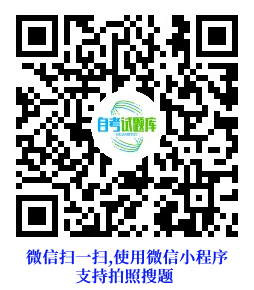注意:此页面搜索的是所有试题
题目内容
(安阳师范学院—大学英语)
[阅读题,10分] You might ask, what is Chinglish, anyway? It depends on whom you ask. Chinese parents raising their children in English-speaking countries will probably answer: Chinglish is a useful mix of standard Chinese or Cantonese terms with day-to-day English. It is indeed convenient to shorten a sentence such as “I don’t want to go now because it is too hot and it will be hard to find a parking lot anyway” into “Don’t go la, hot la, tai mafan la.” For the Chinese high-school teacher, Chinglish is the students’ unsuccessful attempts to understand English in a Chinese way, resulting in sentences such as “Please hurry to walk or we’ll be late” or “She is very miserable and her heart broke.” However, the English-speaking traveler more frequently comes across Chinglish in the form of public signs. No matter how one looks at the phenomenon, one thing is clear: Chinglish is not a language. Chinglish might be found, according to some scholars, in Chinese Pidgin (混杂语) English, which came to life in the eighteenth century when the British set up their first trading posts in Guangzhou. The term came from the word “business” and served, according to the great Yale China scholar Jonathan Spencer, “to keep the differing communities in touch, by mixing words from Portuguese, Indian, English, and various Chinese dialects, and spelling them according to Chinese grammar.” Some believe that expressions like “Long time no see” or “No can do” appeared during that time. Others refer to the late Qing-Dynasty Empress Dowager Cixi, who forced Chinese villagers to live and work in the West in the nineteenth and early twentieth century. Another possibility is the so-called Yangjingbang , a mix of English and Chinese in the time of Lu Xun, China’s greatest twentieth-century writer. Very influential, too, are the large numbers of people from China to the United States, who came from the Gold Rush time to the last twenty-five years since the beginning of China’s policy of Reform and Opening. No matter which theory one prefers, two things are certain: first, Chinglish exists because people move, and second, as a language phenomenon (现象), it is almost new. Although most Chinglish expressions are widely regarded as mistakes, occasionally some are found enjoyable. Such errors will not die, as they keep coming all the more in our time, largely thanks to the Internet.
1.According to the passage, Chinglish is regarded as useful by ______.
A.some western scholars
B.English-speaking travelers
C.Chinese high-school teachers
D.Chinese parents in English-speaking countries
2. The second paragraph mainly discusses ______.
A.why Chinglish became popular
B.how Chinglish came into being
C.who invented the term “Chinglish”
D.where Chinglish was most popular
3.According to Jonathan Spencer, Pidgin English serves to ______.
A.force Chinese villagers to learn English
B.overcome language difficulties in business
C.help peoples communicate with each other
D.enlarge the vocabulary of the Chinese language
4. According to the passage, Yangjingbang (Line 11, Paragraph 2) is ______.
A.a kind of Chinglish
B.an influential language
C.a mix of any two languages
D.a language in Lu Xun’s time
5.The author’s attitude towards Chinglish can be described as ______.
A.critical
B.objective
C.emotional
D.supportive

1.According to the passage, Chinglish is regarded as useful by ______.
A.some western scholars
B.English-speaking travelers
C.Chinese high-school teachers
D.Chinese parents in English-speaking countries
2. The second paragraph mainly discusses ______.
A.why Chinglish became popular
B.how Chinglish came into being
C.who invented the term “Chinglish”
D.where Chinglish was most popular
3.According to Jonathan Spencer, Pidgin English serves to ______.
A.force Chinese villagers to learn English
B.overcome language difficulties in business
C.help peoples communicate with each other
D.enlarge the vocabulary of the Chinese language
4. According to the passage, Yangjingbang (Line 11, Paragraph 2) is ______.
A.a kind of Chinglish
B.an influential language
C.a mix of any two languages
D.a language in Lu Xun’s time
5.The author’s attitude towards Chinglish can be described as ______.
A.critical
B.objective
C.emotional
D.supportive
参考答案
